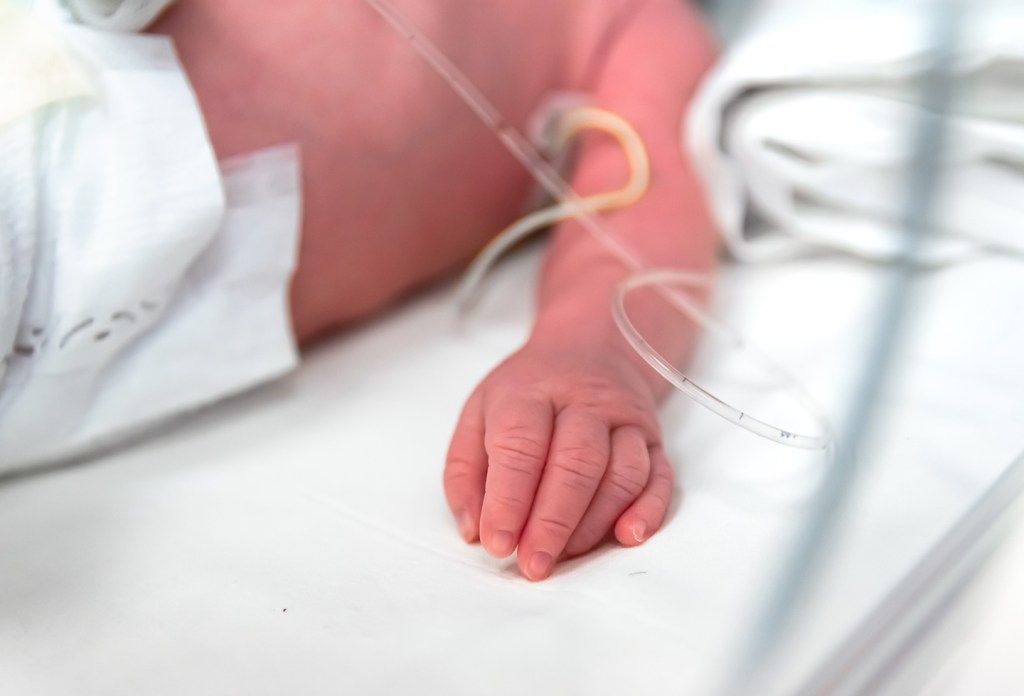(All images are screen shots from ‘High Society: NOS’)
You can get a lot of things for free on the NHS, but a five foot cylinder of nitrous oxide isn’t supposed to be one them. Mind you, that hasn’t stopped plenty of people figuring out that stealing NOS cylinders from hospitals in order to sell the gas in balloons at parties, festivals and raves can be a highly lucrative venture. With punters happy to spend £2 to £5 on each balloon, even a smaller 3ft cylinder can be converted into about £700 of pure profit.
Videos by VICE
In the new episode of the VICE.com drug series High Society we meet a NOS thief from London known as “Big Blue” who shows us exactly how it’s done. He discusses how he targets hospitals to steal NOS, either by breaking into the buildings themselves or by targeting outdoor cylinder lock-ups. Although CCTV footage captures him being “fucked up” (his words) by hospital security guards on at least one occasion, he claims he faced no further action after he was taken to a police station, as the CCTV footage was not considered enough evidence without his fingerprints on the tanks.
Big Blue isn’t alone in targeting hospitals, and there have been convictions in other cases. Just last week a 25-year-old woman was jailed for a year-and-a-half after being found guilty of a string of thefts, which included stealing six 6ft nitrous oxide cylinders from Bath’s Royal United Hospital. Police believe the cylinders were stolen to fill balloons to “give people a high”. Further thefts in the last few months have been reported up and down the length of the UK, from Kirkcaldy in Scotland to Canterbury in Kent. It’s not just hospitals, either. In May of 2016, thieves hit the University of Cambridge’s Department of Veterinary Medicine, making off with a 5ft cylinder.
WATCH: The Laughing Gas Black Market
According to NHS figures obtained by VICE, in 2014/15 over 100 medical gas cylinders were reported stolen from healthcare facilities across the country, with the true figure likely to be even higher. The majority of these thefts of cylinders were of nitrous oxide or Entonox, a brand name that a NOS-oxygen mix is sometimes sold under. The NHS estimates that losses resulting from the thefts and damage caused by the burglaries were in excess of £100,000 that year.
Of course, people wanting to get their hands on NOS is nothing new. It’s been used as an anaesthetic in hospitals since 1844, and inhaled for fun for even longer. It first blew up as a party drug in 1799, when it was popular with the British upper classes and romantic poets like Coleridge. As such, it’s difficult to pinpoint exactly when these sorts of thefts started occurring. There’s anecdotal evidence to suggest that many of the early thefts of nitrous from hospitals were in fact inside jobs. A 1970 report from Michigan records that: “It was not uncommon [in the interviews] to hear from individuals who had been to parties where a professional (doctor, nurse, scientist, inhalation therapist, researcher) had provided nitrous oxide.”
The popularity of NOS at illegal raves in the UK began to increase from around 2008, and by 2010 even Prince Harry was being reprimanded by the tabloids for allegedly inhaling a balloon of the stuff. NOS was included in the Crime Survey for England and Wales for the first time in 2012-13, with 6.1 percent of adults aged 16 to 24 saying they’d taken nitrous oxide. That had risen to 7.6 percent by the following year.

In March of 2015 the Advisory Council on the Misuse of Drugs, the scientific body designed to advise the government on drug issues, wrote to then-Home Secretary Theresa May and Health Secretary Jeremy Hunt about NOS. They made it clear that, in their view, “the harmfulness of nitrous oxide does not seem to warrant control under the Misuse of Drugs Act 1971”. However, they did also note in their letter that “the diversion of nitrous oxide from legitimate healthcare settings [is] an illicit source of the gas” and that there is a “widespread criminal interest in the gas”. They pointed out that the crime was prevalent enough that the NHS had been forced to bring in specific guidelines for keeping medical gas cylinders safe.
Going against the Advisory Council’s advice, as is their wont, the government did include NOS in the list of newly controlled substances when the Psychoactive Substances Act came into force in May of 2016. Although many of the headlines focused on the impact on “legal highs”, criminologist Fiona Measham believes that “the biggest impact has been on nitrous oxide”.

Before the Act was introduced, most NOS consumed at raves had been sold ostensibly for use in catering in order to whip cream. It can still be sold legally for this purpose, although the Act advises retailers to “pay particular attention to the potential for abuse of nitrous oxide, especially where customers seek to buy in bulk or large volumes”.
With those sorts of sales being cracked down on, it’s little surprise that workers at hospitals, dentist’s offices, vets and other health centres are increasingly likely to turn up in the morning to find out that someone’s made off with their NOS overnight.
And it’s the NHS that ultimately loses out in all this. When I contacted NHS England to ask them how they’re feeling about the current state of NOS thefts, their spokesperson sent me this statement: “Nitrous oxide thefts undoubtedly cost our hospitals money at a time when the NHS is under pressure – that’s lost NHS cash which could certainly be used to provide essential health care for patients. It’s not a victimless crime, and it’s no laughing matter.”
More on VICE:
Why Were Devon and Cornwall Police Selling Laughing Gas On eBay?
The Psychoactive Substances Act Is Mostly Helping London Police Arrest NOS Sellers




